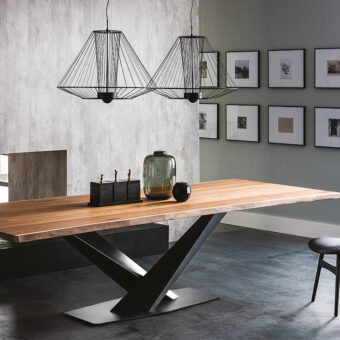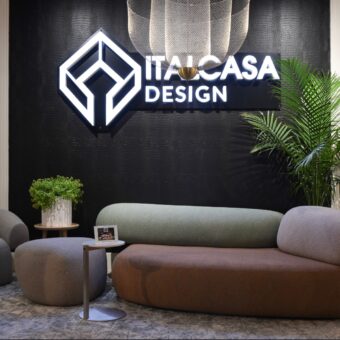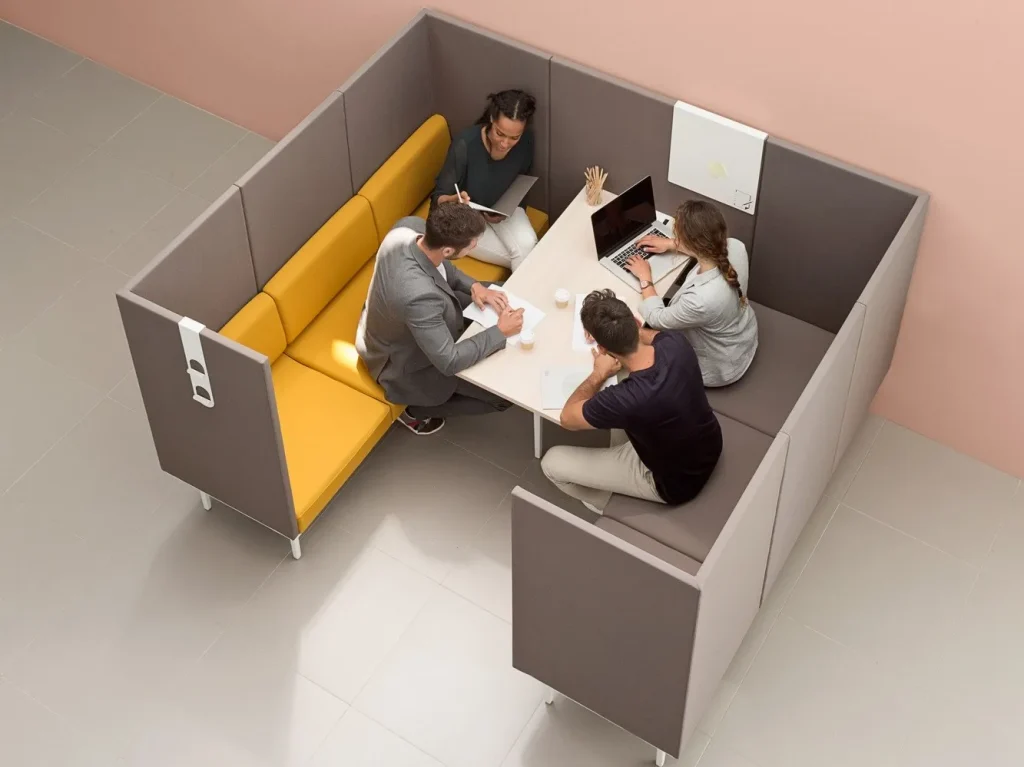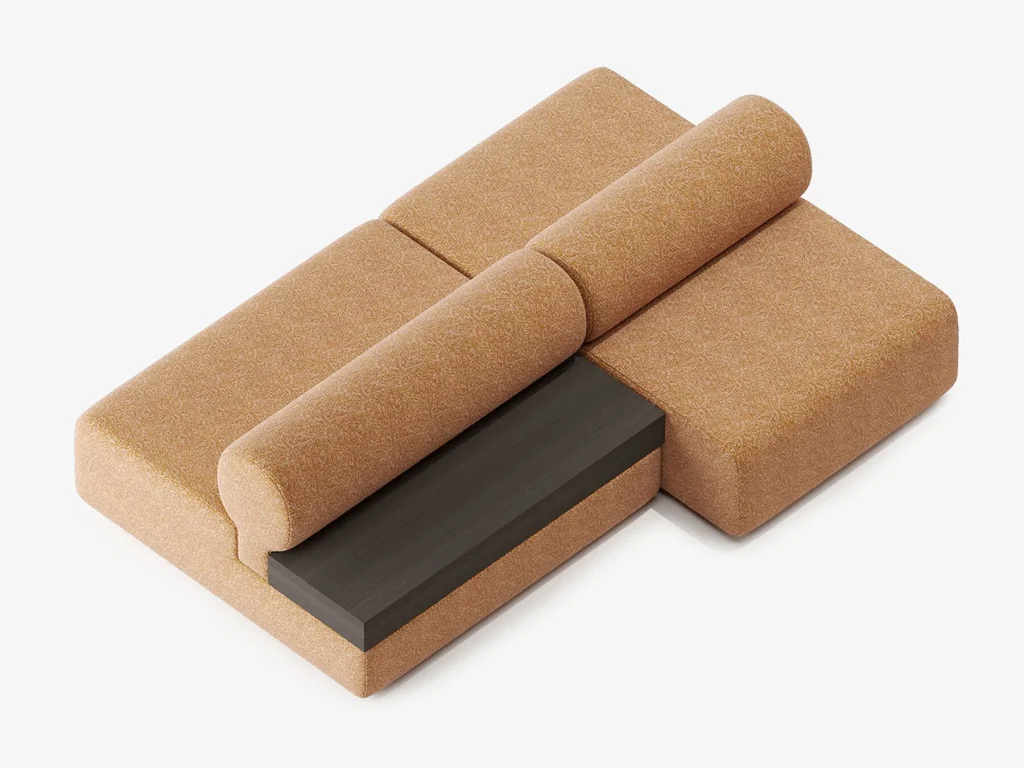SOFT WORK By Vitra
Apple Shopping Event
Hurry and get discounts up to 20% Read more
The Soft Work office seating system offers a versatile platform for both individuals and teams. Besides ergonomic seating options, users also find practical table surfaces, power outlets and charging stations. Mobile tables and chairs can be pulled up as needed and put away again, and the addition of panels creates spaces for quiet, concentrated work.
Never since the introduction of computers have office structures and work habits undergone such a radical transformation as that taking place today. Public spaces are becoming workspaces: thanks to communication technology, people can now work in hotel lobbies, cafs, airports or even parks. And in reverse, offices are becoming public spaces: many companies are now creating open and inspiring locations in which employees or external visitors can relax, hold meetings or spend the day working. As work is no longer tied to a specific location, new behavioural patterns have developed, which are gradually finding their way into the office. For example, the sofa has become a place on which to work even though it is not necessarily suited to this task from an ergonomic viewpoint.
With this in mind, Vitra and the designers Edward Barber and Jay Osgerby have devised and developed the new seating system Soft Work, uniting expertise from the home, office and public sectors. Instead of creating a working environment centred around desks with peripheral sofas, Soft Work has developed into a system in which table workstations are focused around a seating landscape. Barber and Osgerby see this as a long-term development: ‘The workstation is going the same way as the dining room its disappearing as an archetype. The desk has had its day. With mobile technology you need a place to sit occasionally, or a comfortable place to hang out. Thats our belief.’
Soft Work offers a versatile platform for both individuals and teams. Besides ergonomic seating options, users also find practical table surfaces, power outlets and charging stations. Mobile tables and chairs can be pulled up as needed and put away again, and the addition of panels creates spaces for quiet, concentrated work. Thanks to its modular concept, Soft Work can be easily assembled into diverse arrangements, enabling architects to structure the internal spaces of a building, create specific focal points, or define flexible public areas.

Authorities in our business will tell in no uncertain terms that Lorem Ipsum is that huge, huge no no to forswear forever. Not so fast, I'd say, there are some redeeming factors in favor of greeking text, as its use is merely the symptom of a worse problem to take into consideration.
Anyway, you still use Lorem Ipsum and rightly so, as it will always have a place in the web workers toolbox, as things happen, not always the way you like it, not always in the preferred order.
Request a Quote
Average response time is approximately 30 minutes

SOFT WORK By Vitra
Get In Touch With Us
Italcasa Furniture & Interior Design
32968 Woodward Ave,
Royal Oak, MI 48073
Mon - Fri 10 a.m. - 05 p.m.
Sat - Sun 11 a.m. - 04 p.m.
Italcasa Design - Michigan Design Center
1700 Stutz Dr suite 30,
Troy, MI 48084
Mon - Fri 10 a.m. - 05 p.m.
Sat - Sun 11 a.m. - 04 p.m.
Product details
Made possible by exploring innovative molded plywood techniques, Iskos-Berlin’s Soft Edge Chair blends strong curves with extreme lightness to create a three-dimensionality not usually possible with 2-D plywood.
Description
The Soft Work office seating system offers a versatile platform for both individuals and teams. Besides ergonomic seating options, users also find practical table surfaces, power outlets and charging stations. Mobile tables and chairs can be pulled up as needed and put away again, and the addition of panels creates spaces for quiet, concentrated work.
Never since the introduction of computers have office structures and work habits undergone such a radical transformation as that taking place today. Public spaces are becoming workspaces: thanks to communication technology, people can now work in hotel lobbies, cafs, airports or even parks. And in reverse, offices are becoming public spaces: many companies are now creating open and inspiring locations in which employees or external visitors can relax, hold meetings or spend the day working. As work is no longer tied to a specific location, new behavioural patterns have developed, which are gradually finding their way into the office. For example, the sofa has become a place on which to work even though it is not necessarily suited to this task from an ergonomic viewpoint.
With this in mind, Vitra and the designers Edward Barber and Jay Osgerby have devised and developed the new seating system Soft Work, uniting expertise from the home, office and public sectors. Instead of creating a working environment centred around desks with peripheral sofas, Soft Work has developed into a system in which table workstations are focused around a seating landscape. Barber and Osgerby see this as a long-term development: ‘The workstation is going the same way as the dining room its disappearing as an archetype. The desk has had its day. With mobile technology you need a place to sit occasionally, or a comfortable place to hang out. Thats our belief.’
Soft Work offers a versatile platform for both individuals and teams. Besides ergonomic seating options, users also find practical table surfaces, power outlets and charging stations. Mobile tables and chairs can be pulled up as needed and put away again, and the addition of panels creates spaces for quiet, concentrated work. Thanks to its modular concept, Soft Work can be easily assembled into diverse arrangements, enabling architects to structure the internal spaces of a building, create specific focal points, or define flexible public areas.
Description
The Soft Work office seating system offers a versatile platform for both individuals and teams. Besides ergonomic seating options, users also find practical table surfaces, power outlets and charging stations. Mobile tables and chairs can be pulled up as needed and put away again, and the addition of panels creates spaces for quiet, concentrated work.
Never since the introduction of computers have office structures and work habits undergone such a radical transformation as that taking place today. Public spaces are becoming workspaces: thanks to communication technology, people can now work in hotel lobbies, cafs, airports or even parks. And in reverse, offices are becoming public spaces: many companies are now creating open and inspiring locations in which employees or external visitors can relax, hold meetings or spend the day working. As work is no longer tied to a specific location, new behavioural patterns have developed, which are gradually finding their way into the office. For example, the sofa has become a place on which to work even though it is not necessarily suited to this task from an ergonomic viewpoint.
With this in mind, Vitra and the designers Edward Barber and Jay Osgerby have devised and developed the new seating system Soft Work, uniting expertise from the home, office and public sectors. Instead of creating a working environment centred around desks with peripheral sofas, Soft Work has developed into a system in which table workstations are focused around a seating landscape. Barber and Osgerby see this as a long-term development: ‘The workstation is going the same way as the dining room its disappearing as an archetype. The desk has had its day. With mobile technology you need a place to sit occasionally, or a comfortable place to hang out. Thats our belief.’
Soft Work offers a versatile platform for both individuals and teams. Besides ergonomic seating options, users also find practical table surfaces, power outlets and charging stations. Mobile tables and chairs can be pulled up as needed and put away again, and the addition of panels creates spaces for quiet, concentrated work. Thanks to its modular concept, Soft Work can be easily assembled into diverse arrangements, enabling architects to structure the internal spaces of a building, create specific focal points, or define flexible public areas.


























